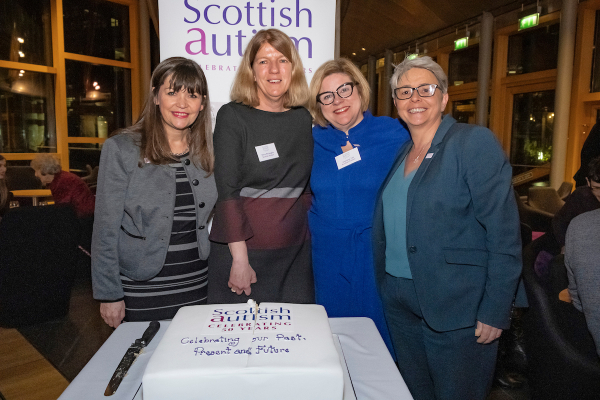Positive emotions and wellbeing: Rethinking special need support
Michael Harboe Kvistgaard, Consultant in Special Needs
What does every person in the world wish in their lives? According to Martin Seligman, founder of positive psychology and former president of the American Psychological Association, every person in the world would like to improve their wellbeing. Whilst this may be an accurate observation, Peter Vermeulen highlights that “it is remarkable that emotional wellbeing and the pursuit of it, although being highly valued for every human being, has received so little attention in research on the autism spectrum.” i
According to Seligman, wellbeing can be understood as a concept which consists of five elements, as described within the PERMA-model: Positive emotions, Engagement, positive Relations, Meaning and Accomplishmentsii. Within this model, in order to improve your wellbeing, you can:
- Find ways to increase the amount of positive emotions in life
- Be more engaged in what you do. Being absorbed in activities - experience more flow states
- Spend more time with persons that you enjoy being with and with who you experience mutual care and respect
- Find purpose and see the big picture in what you do, or do more things which are meaningful to you
- Achieve various big and small things – have success in different areas of life
Positive emotions in themselves may appear to be the “low-hanging fruits” as engagement and accomplishments appear more difficult to plan and predict (especially for others). As the domains of social interaction and social imagination constitute two central areas of difficulty for many autistic people, a focus on relations and meaning appear central to many programs of positive support. In light of this, in order to increase wellbeing within autistic individuals, it appears important to focus on the remaining element- that of positive emotions. Extending past the PERMA-model, positive emotions in themselves are clearly linked to wellbeing. For example, Barbara Fredrickson, suggests that “higher positivity ratios are predictive of flourishing mental health and other beneficial outcomes”.iii A positivity ratio is the expression of the amount of positive emotions present compared to the amount of negative emotions and can be understood as the balance between positive emotions and negative emotions. Fredrickson also found positive emotions appear to broaden the scope of attention and thought-action repertoires of individuals whereas negative emotions appear to narrow the scope of thought-action repertoires and attention.
So the question remains – just how do you increase positive emotions in your life or within the life of others? Should you just decide to be happy? Perhaps not - just relying on making a decision to be happy could be described as ‘positivity-fascism’, whereas the actual practical increase of positive emotions appears linked more to the experience of ‘heartfelt positivity’.
Viktor Frankl proposed that “pleasure is, and must remain, a side-effect or by-product, and is destroyed and spoiled to the degree to which it is made a goal in itself” v. In light of this premise, a practical way to increase positive emotions may be to undertake new activities and mindsets which promote the production of positive emotions as a byproduct. For inspiration, I suggest the following two books: “Positivity”vi and “The how of happiness”vii, each of which contain a toolkit to enhance positivity or happiness. In this regard it is important to mention these toolkits are not designed specifically for autistic individuals and so may require some adaptation by support staff. The following strategies to enhance positive emotions are partly derived from these books and are meant to provide inspiration for a variety of activities and processes which staff may initiate within services.
- Savouring: To attend to, appreciate and enhance the positive experiences in life. Memory of past, sensation of present- and anticipation of future events
- Positive Emotion Profiles: Create an overview of what creates positive emotions, so this can be done more
- Positivity portfolios: Collages with images of individualised understanding of joy, amusement, love etc.
- Physical activity
- Meditation: Many guided meditations are not autism friendly and require adaptation
- Humour: Adapted to the individual - slapstick humour over puns, simple jokes and to more sophisticated humour
- Identify and use strengths: What is the individual good at and what gives him/her energy - do it more!
I believe there is a great potential to support and develop individual learning and wellbeing within autism services by remodelling work within services towards a more ‘wellbeing-oriented’ approach.
REFERENCES
i Seligman, M. E. P. (2011). Flourish : a new understanding of happiness and wellbeing -and how to achieve them. London: Nicholas Brealey Pub.
ii Vermeulen, P. (2014). The Practice of promoting happiness in autism. In D. G. Jones & D. E. Hurley (Eds.), GAP: Good Autism Practice - Autism, happiness and wellbeing (pp. 8-17). Glasgow: BILD Publications.
iii Fredrickson, B. L. (2013). Updated thinking on positivity ratios. The American Psychologist, 68(9), 814-822. doi:10.1037/ a0033584
iv Fredrickson, B. L., & Branigan, C. (2005). Positive emotions broaden the scope of attention and thought-action repertoires. Cognition & Emotion, 19(3), 313-332. doi:10.1080/02699930441000238
v Frankl, V. E. (2004). Man’s search for meaning: the classic tribute to hope from the Holocaust. London: Rider.
vi Fredrickson, B. L. (2009). Positivity. New York: Crown Publishers.
vii Lyubomirsky, S. (2007). The how of happiness : a new approach to getting the life you want. New York: Penguin Press.





